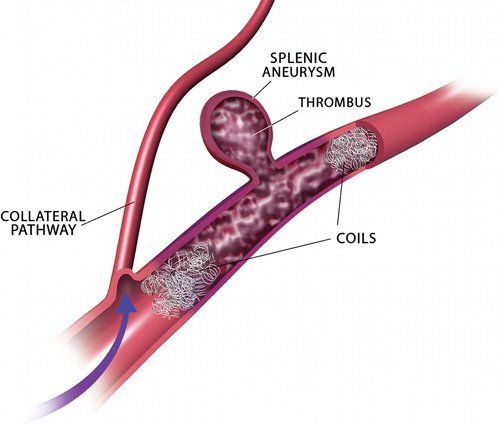Splenic Artery Aneurysm

An aneurysm occurs when the wall of the artery weakens over time and the wall expands/dilates (like blowing up a balloon). Splenic artery aneurysms are the most common type of visceral artery aneurysm (aneurysms of the abdominal organ arteries).
Risk factors for splenic artery aneurysm include pancreatitis, trauma, pregnancy, portal hypertension, cigarette smoking, high cholesterol, high blood pressure, and some connective tissue disorders.
The most common symptom would be vague abdominal pain that may radiate to the shoulder. Rupture is rare, but can be lethal, and symptoms would be sudden, severe abdominal pain and low blood pressure from internal bleeding.
Diagnosis is made with ultrasound or CT scan of the abdomen/pelvis.
Popliteal artery aneurysms can be treated with minimally invasive techniques by puncturing the artery in the groin or arm and placing coils into the aneurysm to make it clot and/or stents to divert flow around the aneurysm. Popliteal artery aneurysms may also have to be treated with major open abdominal surgery to remove the spleen and/or tie off the splenic artery.
For more information, contact Paducah Vascular Institute at (270) 845-4300 to schedule an appointment.


